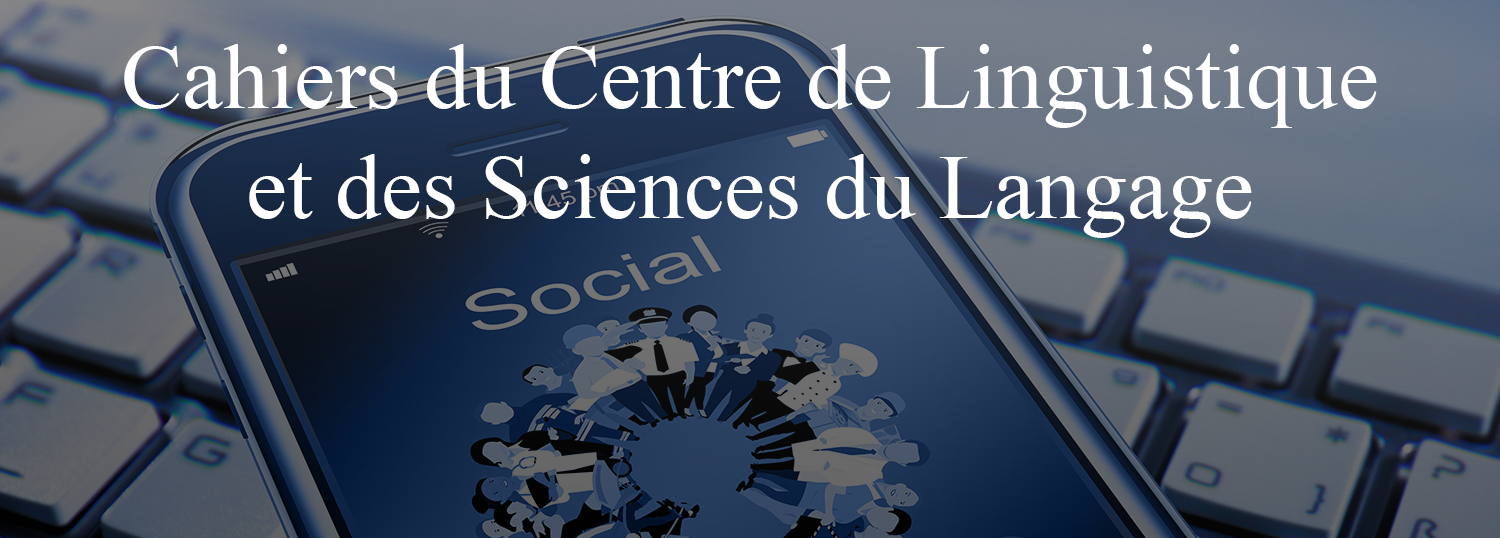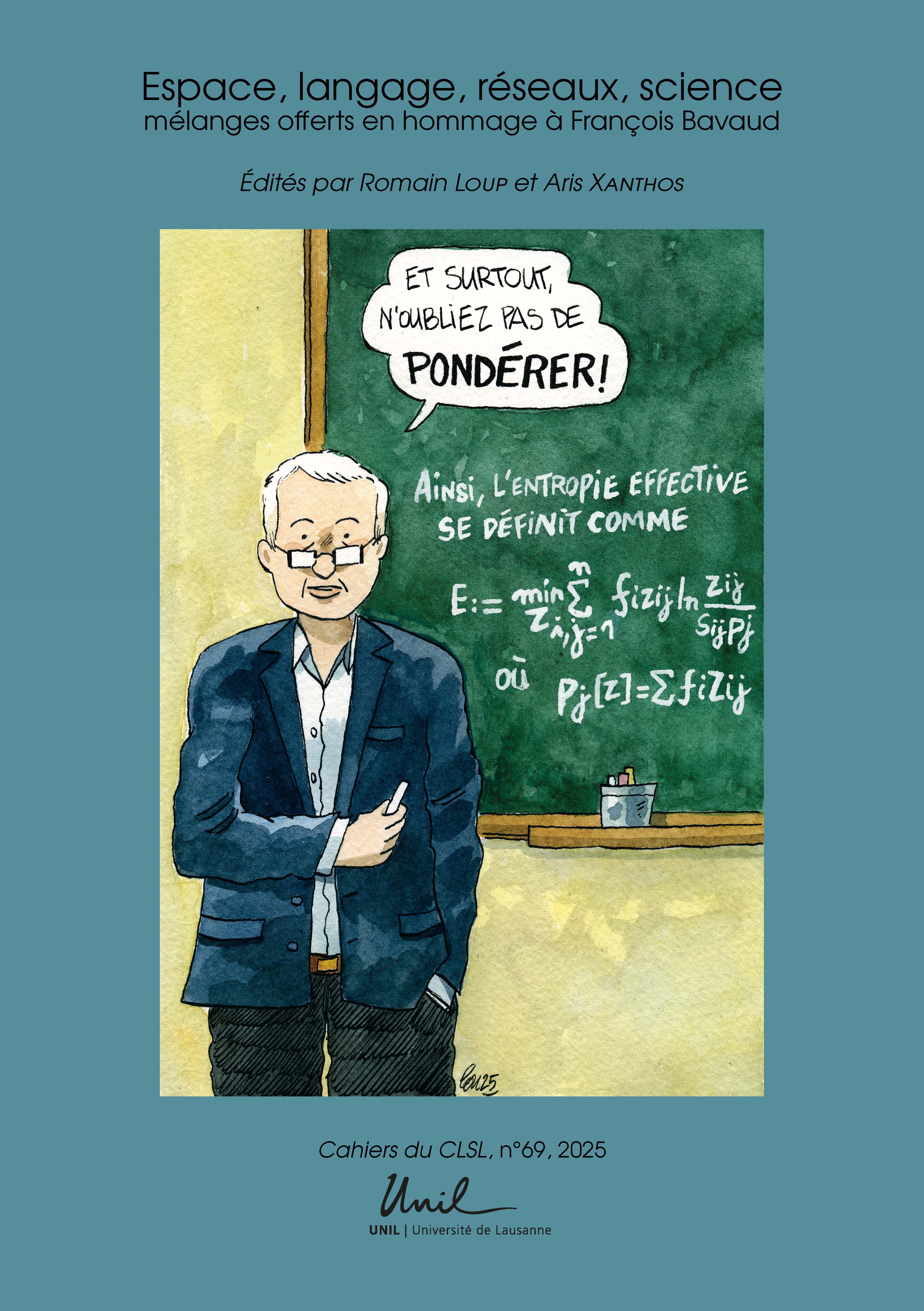Numéro courant
Ce volume rassemble quinze contributions offertes en hommage au Professeur François Bavaud par ses collègues, ancien·ne·s étudiant·e·s et ami·e·s à l’occasion de son départ en retraite. Reflétant le large spectre de ses intérêts scientifiques, les chapitres de ce recueil portent sur des thématiques allant de l'analyse spatiale à la linguistique computationnelle et quantitative, en passant par l'analyse de réseaux et son application au domaine (vidéo-)ludique, l’histoire de la terminologie mathématique et l’épistémologie de la quantification.
Articles
Depuis 1992, le Centre de linguistique et des sciences du langage (CLSL) publie les Cahiers de linguistique et des sciences du langage (anciennement les Cahiers du D.L.S.L, puis les Cahiers de l'ILSL) à un rythme de deux à quatre publications annuelles environ. Chaque Cahier s’articule autour d'une thématique spécifique des sciences du langage (analyse des interactions, analyse du discours, histoire de la linguistique, humanités numériques et nouvelles technologie, linguistique historique, phonétique, phonologie, plurilinguisme et apprentissage des langues, sociolinguistique) et est édité par un ou plusieurs chercheurs du Centre. Les Cahiers ont pour but de promouvoir les travaux des chercheurs débutants et avancés et visent à favoriser l’interdisciplinarité entre les différentes linguistiques représentées au sein du Centre.

